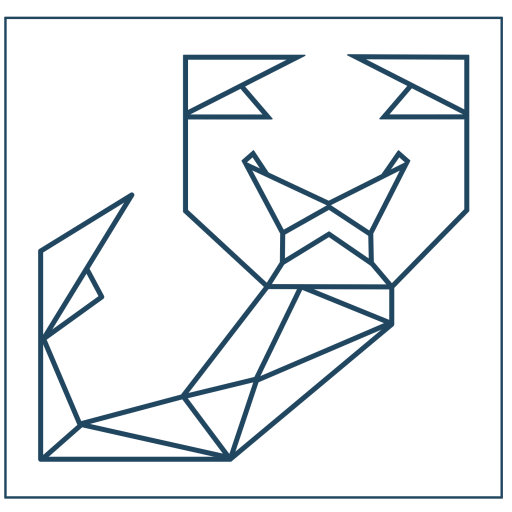
Email Marketing Success Code
March 2, 2024
Digital Media Convergence and Advertising Strategies
March 23, 2024NFT as the Artistic Revolution

Non-fungible tokens (NFTs) are digital assets that represent art, collectibles, and game items. Public interest in NFTs has skyrocketed in 2021, when their market saw record sales, but little is known about the overall structure and evolution of the industry. It has been discovered that traders tend to specialize in NFTs with similar objects, forming tight clusters with other traders who exchange similar objects. Clustering objects associated with NFTs based on visual features demonstrates visual homogeneous collections. Also using simple machine learning algorithms can predict NFT sales and find that sale history and visual features which are effective predictors of price.

The impact of Non Fungible Tokens on the art world, as well as the novelty they represent for the majority of the general public, has recently become obvious. The revolution isn’t limited to the art market. NFT adoption has matured in gaming, particularly for trading in-game objects. However, other industries, such as music and video production, are also exploring the technology. In the first four months of 2021, NFT trading volume exceeded 2 billion USD, ten times higher than in 2020.This is a blockchain-based data unit that certifies a digital asset as unique and not interchangeable. It also provides a unique digital certificate of ownership for the NFTs.

An NFT establishes the “provenance” of a digital object, providing clear answers to questions about ownership, creation, and which copy is original. It can be associated with a variety of digital objects, such as photos, videos, and audio.
NFT Historical Roots

The first popular example of Non-Fungible Token is CryptoKitties, a game on Ethereum where players can purchase, collect, breed, and sell virtual cats.
In December 2017, CryptoKitties caused congestion on the Ethereum network. For nearly two years, CryptoKitties was the most popular example of NFTs, highlighting the irrationality that drove the cryptocurrency market in 2017. In July 2020, its market gained popularity. In March 2021, artist Beeple sold an Non-Fungible Token for $69.3 million at Christie’s. The purchase resulted in the third-highest auction price for a living artist, behind Jef Koons and David Hockney.

Limited research on this topic focuses on technical aspects such as copyright regulations, protocols, standards, and desired properties. It also examines the impact of NFTs on the art world, including the ability to share secondary sale royalties with artists. Empirical studies on Non-Fungible Token collections, such as CryptoKitties, Cryptopunks, and Axie, or a single NFT market, such as Decentraland, or SuperRare, have been conducted to characterize market properties. The abundance of NFTs in digital games has resulted in a significant decrease in their value. While NFT prices are influenced by cryptocurrency prices, the market may still be prone to speculation. Expert-valued NFTs have higher success rates.
The World of NFT Varieties

Items traded on the this market are organized into collections, which are groups of Non-Fungible Token that, in most cases, share common characteristics. Collections can take many different forms, such as sets of collectible cards, selections of art masterpieces, or virtual spaces in online games. Collections are typically divided into six categories: art, collectibles, games, metaverse, other, and utility (also known as “SI”).
The idea is that Non-Fungible Tokens create a scarcity of digital objects, allowing for a new type of traceable digital ownership. In theory, a digital asset, such as an image or video, could appear numerous times on the internet, but only a few of them—or perhaps just one—would have the provenance of an NFT. (The Walt Disney Company, the majority owner of National Geographic Media, sells NFTs. National Geographic Media has collaborated with the Non-Fungible Token platform Snowcrash to do the same.

It is important to note that Non-Fungible Tokens do not always contain asset data (though some do), nor do they always transfer copyright. Typically, an NFT includes a URL that points to the asset, which is stored on a separate computer network. Over the last two years, Non-Fungible Tokens have gained popularity due to the large sums of money they have attracted: as collectibles, speculative investments, and displays of wealth. In March 2021, Beeple, a digital artist, sold an NFT at auction for $69 million to an investment firm looking to promote digital art. The value of the Bored Ape Yacht Club, an Non-Fungible Token collection featuring 10,000 cartoon primates, skyrocketed in early 2022 as a result of a series of celebrity promotions. These Non-Fungible Tokens are now selling for tens thousands of dollars.
NFT Utility Potentials

Proponents argue that Non-Fungible Tokens offer artists a new revenue model by allowing them to sell images, videos, and other digital assets as online collectibles or fine art. Unlike standard digital files, Non-Fungible Tokens can include tiny computer programs known as “smart contracts,” which can sometimes pay royalties to the original artist when the Non-Fungible Token is resold. Because they are unique and transferable, NFTs can also be used as tickets, membership credentials, or carbon credit records. Blockchain-based video games, such as Axie Infinity, use Non-Fungible Tokens as in-game characters and items for players to own.

Aside from digital ownership, NFTs’ decentralized nature suggests that they could be used to help protect digital files from tampering or to track the chain of custody. In June, the International Criminal Court received a dossier from Starling Lab, a research group founded by Stanford and the USC Shoah Foundation,that used Non-Fungible Tokens and related technologies to archive records of Russian military attacks on Ukrainian schools. For starters, many proposed Non-Fungible Tokens applications do not require them to function (e.g., club memberships) or have yet to be implemented.

As a result, some critics see the proliferation of Non-Fungible Tokens is nothing more than a “gold rush” unrelated to the underlying technology. There are also technical issues. It is unclear whether one of NFTs’ most promising applications, an interoperable “metaverse,” is technically feasible. And if you’ve ever clicked on a broken website link, you understand how difficult it is to keep a digital asset online. Non-Fungible Tokens typically do not contain digital assets, so any given Non-Fungible Token is only as stable as the computer (or network) that stores the asset’s file. Even if the computer storing the asset is well-maintained, it is difficult to avoid “bit rot,” or the tendency of data to degrade over time. In response, developers are devising methods for storing files in a decentralized, redundant format.

NFTs, like other emerging technologies, have attracted a large number of criminals. Grifters have inflated Non-Fungible Tokens prices through self-dealing “gold brick” scams, and they have minted and sold a large number of Non-Fungible Tokens based on stolen art. Non-Fungible Token projects appear on a regular basis, promising buyers an exciting long-term vision, only to fail and disappear with the buyers’ money. Scammers have received assistance from the blockchain itself. Non-Fungible Tokens thieves frequently use phishing attacks and other methods to trick people into emptying their digital wallets. In 2022 alone, more than $100 million in Non-Fungible Tokens were stolen. However, because Non-Fungible Token transactions are designed to be decentralized, third parties cannot reverse illicit transfers.

Furthermore, Non-Fungible Tokens have faced criticism for their carbon footprint. Most rely directly or indirectly on the Ethereum blockchain, which was previously energy-intensive. For example, on one day in January 2022, one Ethereum emissions estimate exceeded 300 pounds of CO2 per transaction. That’s equivalent to igniting more than 16 gallons of gasoline.
NFTs in Tomorrow’s Digital Landscape
Non-fungible tokens (NFTs) have swept the digital landscape, offering creators a new way to authenticate, protect, and monetize their work. Experts believe that as the NFT space evolves, this technology will have enormous future potential. One of the key factors determining the future of Non-Fungible Tokens is their application beyond digital art and collectibles. Industries such as real estate, gaming, music, and even identity verification are investigating the integration of Non-Fungible Tokens into their ecosystems.

Furthermore, advancements in blockchain technology are expected to address existing NFT-related challenges such as high gas fees, environmental concerns, and scalability issues. Innovations such as Layer 2 solutions, proof-of-stake consensus mechanisms, and carbon-neutral Non-Fungible Token marketplaces are being developed to improve its sustainability and accessibility. These enhancements are likely to attract a larger audience and boost adoption across multiple industries. Furthermore, the intersection of Non-Fungible Tokens and decentralized finance (DeFi) is expected to open up new financial opportunities for Non-Fungible Token holders. Fractionalized ownership, lending, staking, and yield farming are being investigated as ways to unlock the value of Non-Fungible Tokens assets and increase market liquidity.

Such financial innovations have the potential to democratize access to Non-Fungible Tokens while also challenging traditional notions of ownership and investment.
As technology advances and more players enter the market, Non-Fungible Tokens are poised to become a popular method of digital asset ownership and exchange. Non-Fungible Tokens are poised to redefine the way we interact with and value digital content in the coming years, whether by opening up new revenue streams for creators, revolutionizing the gaming industry, or reshaping the financial landscape.
Finally, the future of NFTs is ripe for disruption across industries.




